Hyperlite Mountain Gear Ambassador: Hiking the West Coast Trail, Trip Report
Trail report from Hyperlite Mountain Gear Ambassador David Ure on his hike of the West Coast Trail with his Porter Pack in May 2012 — a little inspiration for this season!
Pray for Rain
The West Coast Trail (WCT) is a 75 KM backpacking trail following the lower and middle west side of Vancouver Island, British Columbia, Canada, although more recent estimates put it closer to 80 KM. Given the aggressive winter storms, trail maintenance has extended the path over the years. It was originally ‘built’ in 1907 to assist in the rescue of survivors of shipwrecks along the coast often dubbed the Graveyard of the Pacific. The entire area is part of the Pacific Rim National Park and since 1973, has been open to the public to enjoy.

The first year I trekked the West Coast Trail was in 2004. With a 64 lb starting wet weight and no idea of what to truly expect. I knew I had fitness on my side. Strength. Endurance. Mental fortitude.
Yeah right.
Nothing could quite prepare me for what I was about to encounter over the 6 days. Tall ladders attached to brazen cliffs of rock where your pack wanted to test the effects of gravity 8 stories high. Massive sticky mud bogs that covered you past your knees. Manually operated cable cars to pass over fast moving and deep rivers. Slippery drift logs with circumferences greater than the average car. Impassable ocean tides and dangerous surge channels. Unpredictable weather – if it doesn’t rain hard and long at some point on a typical WCT trip, it may be time to buy a lottery ticket. Although the soft sand beach looked inviting, it fooled you. Every step sinking deep and forcing your calves to cramp hard as you pushed up. There are as many as 70 ladders, 130 bridges, 4 cable cars and 1 really long, really shaky suspension bridge book marked by ladder systems over 250 feet tall.

During the 4 and a half-month season that permits hiking on the WCT, there are, on average, over 80 evacuations by either boat or helicopter. For some, the trek can be dangerous. The prize for contending with these obstacles is an almost unmatched, and widely varying topography. Scenic beaches, thundering waves, hidden bays, storm chiseled caves and breathtaking waterfalls.
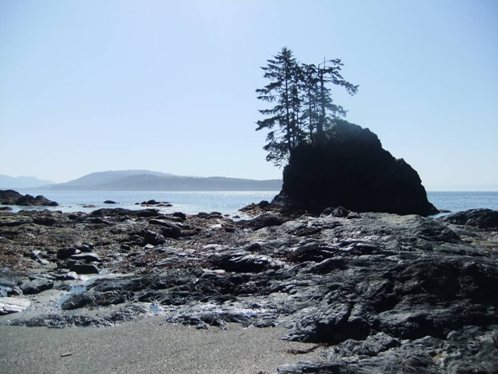
There are geographic formations similar to lunar landscapes and tidal pools to explore when the ocean retreats.

A massive forest canopy with huge Douglas Fir, Sitka Spruce, Hemlock and tall cedar dominates the highland trail.

Incredible access to wildlife – whales, seals, and sea lions.
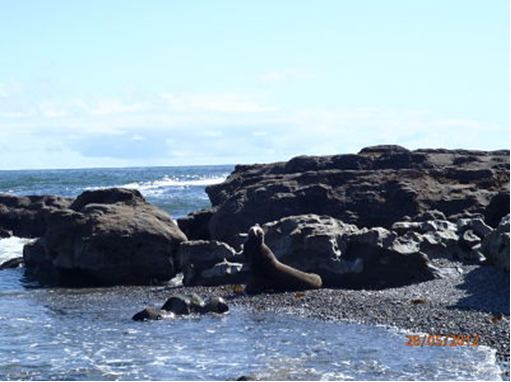
Bald eagle, black bear, cougar and wolf watch you from afar.

Fast forward several years and I have become wiser. Packing light. Doing more. Going further and seeing as much as possible. From a 6 day expedition weight trek to a 2.5 day fast pack adventure. There is no negative to the WCT for me now. All challenges become merely minor obstacles with a light pack.
In May of 2012, I, with 3 others went back to the WCT to test our wills against the elements. Carrying a Hyperlite Mountain Gear Porter Pack and with the removable accessory HMG Porter Pocket, I wanted to validate the pack’s ability to shed rain and withstand destruction through some of the most intimidating sections of the WCT.
Day 1: 7 KM
We started the trailhead in the very late afternoon with full packs and only had a few hours to hike. All packing light, my pack was just over 20 pounds with 2L of water and food. This was a leisurely trip. No race to the finish; no running of any personal records.

This was a chance to savor the trek around, and sometimes through, obstacles that only the WCT can offer.
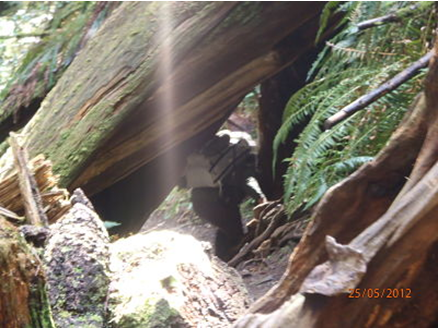
The target camp was Thrasher Cove, which is located an additional 1 KM off the main trail. Although I am not a fan of this campsite because of its location, given we knew that the tides would be low in the morning, we could traverse Owen Point with its Volkswagen sized boulders early the next day and avoid the muddy, root and rock stricken highland trail.
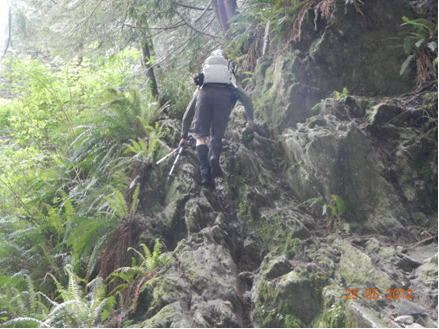
We arrived at camp with no injuries but with copious amounts of mud splatter, smiles, and sweat. But no rain. Where was the rain?
Day 2: 17 KM
Owen Point at low tide. What were we thinking?

Climbing over and beside these massive boulders made us wish we were back in the mud. Not to mention, two nasty spills caused by my own hurriedness made be wonder if hiking in crampons would have been a better idea (it would not). Banged up and a little bruised, my body fared much worse than the Hyperlite Mountain Gear Porter Pack that showed nary a scratch. Bomber fabric and construction.
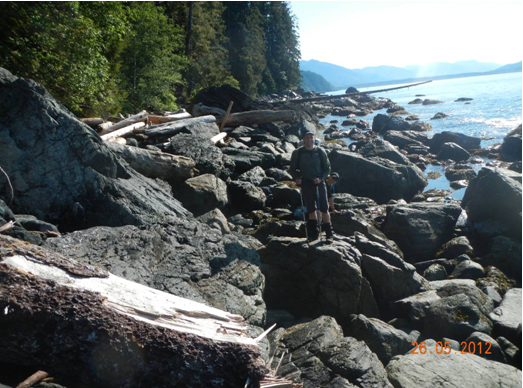
Unable to pass one of the many surge channels found at this side of the WCT, we elected to work back up to the highland trail and then back down to the beach to hike as long as we could until having to take the highland route again. If there were any WCT advice that I would give it would be to take the beach and tidal shelf route as much as possible. The views are incredible.

This is close to the last point from which you can see the state of Washington.

During this portion of the WCT, moving North to Walbran Campsite and around Logan River, one encounters the largest concentration of ladder systems. Some are quite steep.
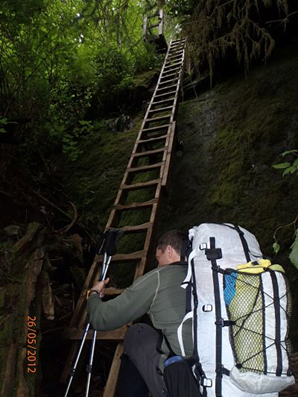
Others are many in number.
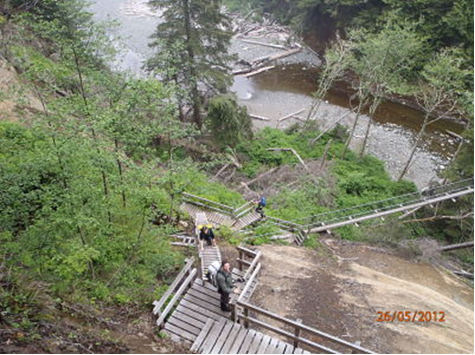
And some are both steep and long.
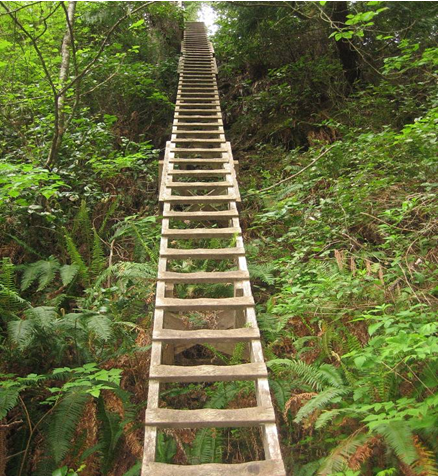
Thankful to be back on the beach as we approach Walbran, we encounter an accumulation of fog, but no rain. Where was the rain?
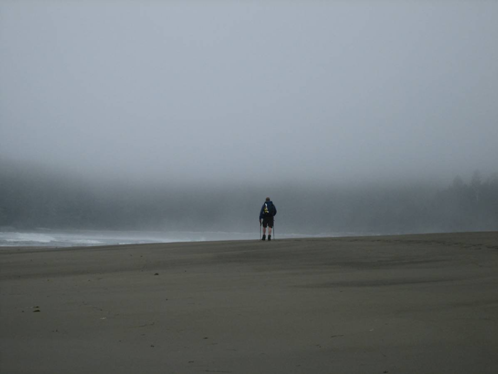
Day 3: 11 KM
We got a late start out of Walbran but that was just fine. Today was a short hiking day to Cribs Campsite. Is that a little rain sprinkle I feel? Yes! Okay, the Porter and I are ready. Wait, where did this sunshine come from? Boy it’s warm. This is the WCT in May?

By 2:00 pm we had pitched our tarp tents, unpacked our packs, and were enjoying the scenery, sights, and smells. Who was I to complain? I would be lying if a couple of us didn’t doze off for a few winks in sunshine.
At 1:00 am I heard it. It started very light then heavier. Rain. Too tired (lazy?) to stick the Porter Pack out from under the vestibule. Back to sleep. 7:00 am. Hello Mr. Sun. So much for rain testing.
Day 4: 20 KM
Today’s agenda: Hike to Klanawa, through Ditidaht tribal land, and across the Nitinat Narrows by small boat. The Ditidaht have been providing this service for many years and while the boat ride only takes 7 minutes or so, it is the fresh crab and salmon that you can buy that gets most of the attention!
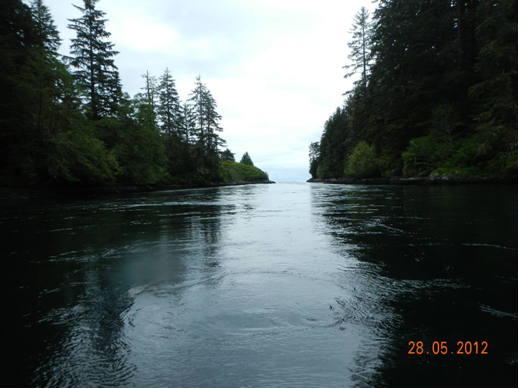
The Nitinat is a saltwater inlet that for the most part, looks like a lake. But when the operators pull up a cage that has caught several crabs and you see the odd seal swimming about, it does cause a re-order of your senses.
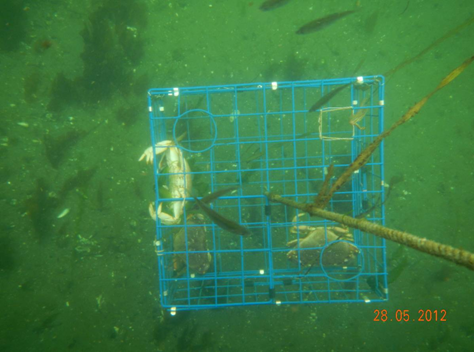
This is also one of the most scenic areas of the WCT with mostly beach and tidal shelf walking (tides permitting). Passing the ‘Hole in the Wall’ can only be completed at low tide and many backpackers have been stranded until the water retreats, easily throwing their progress off by 6 hours or more.
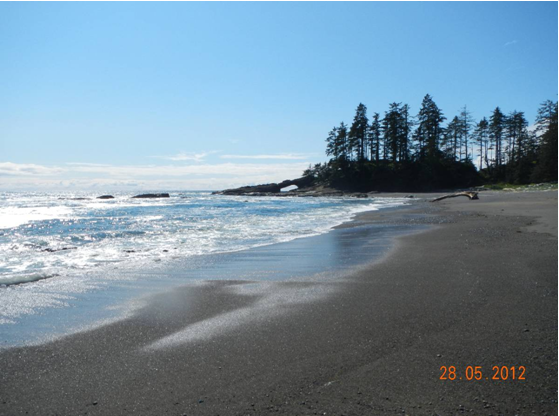
We were thankful the tide was out!
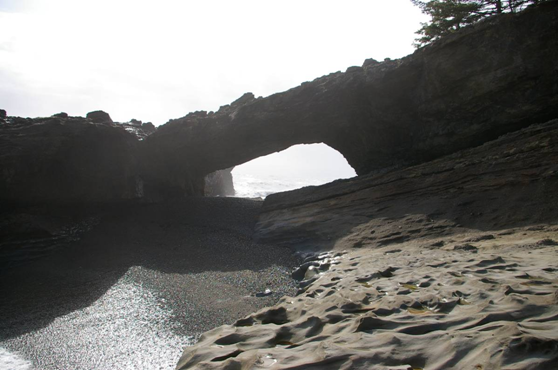
On the way to Klanawa, you also pass Tsusiat Falls. Fresh, salt free water, which was great for a quick shower, rolls into the ocean.
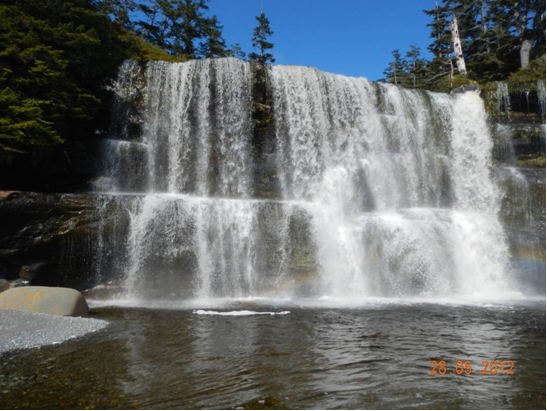
Klanawa was secluded and had some of the largest pieces of driftwood I had ever seen. Wood, wood, everywhere but much too large to burn. Regardless, we did get a small fire going in anticipation of incoming rain clouds. The rain never came.
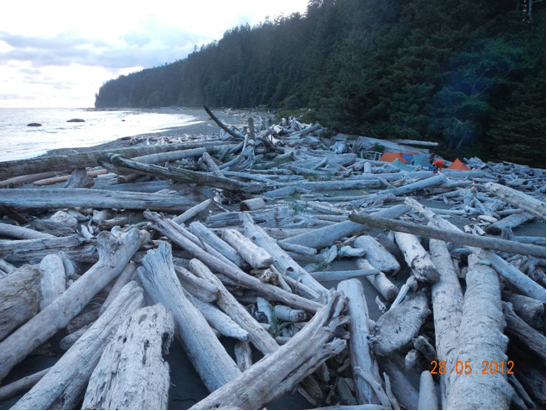
Day 5: 23 KM
The final trek out to the North Trailhead by Pachena Bay was spectacular and we enjoyed the incredible ocean views knowing that the adventure would soon be complete.
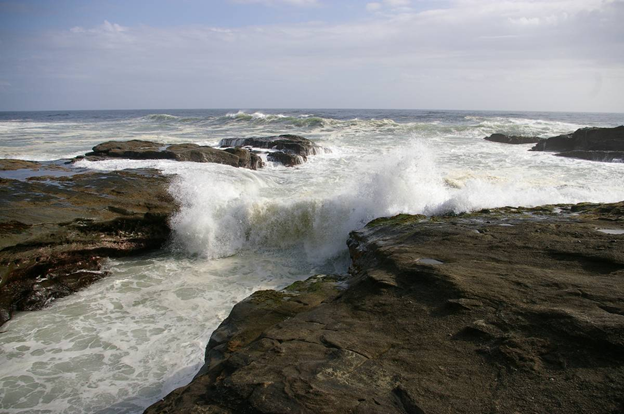
We finished about 3:00 pm that day and managed to get a van to pick us up at the trailhead and drive us to the small town of Bamfield, where we stayed overnight at the Bamfield Trails Motel. The next morning we would take a boat back to the south trailhead where we had parked our rental car. Never did a burger (two actually) taste so good and a squeaky, flatbed feel so bad. Now where did I put my sleeping pad?
Day 6: 80 Plus KM….by boat.
We woke up to rain. A lot of it. Torrential. Breakfast in the pub and then time to check out. I grab the Porter and walk outside to see it work its magic. No dice. The rain has stopped.
As I walk to the boat launch with the Porter Pack on my back contemplating the upcoming 4 hour boat ride, I can’t help but chuckle. Maybe I should take the pack into the shower with me instead. Speaking of the pack, it sure looks good. No abrasion issues, a little dirty maybe but the durability has been excellent (I can’t say the same about a couple of the other packs on the trip).
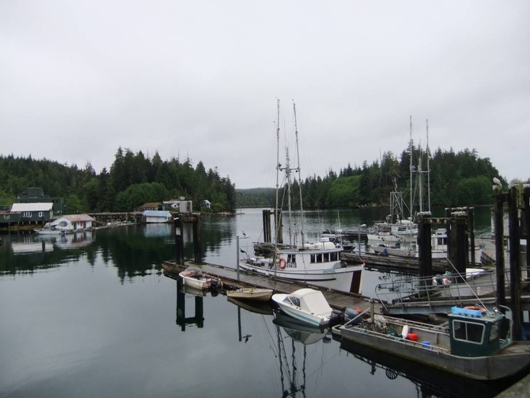
The Boat Captain Brian provides the synopsis of what to expect over the next 4 hour boat ride. Stay in the warm cabin and feel the full effects of the waves and enjoy the potential for severe seasickness, or stay outside where the ride is much calmer but the cold wind and splashing salt water can make the journey a little more than uncomfortable.
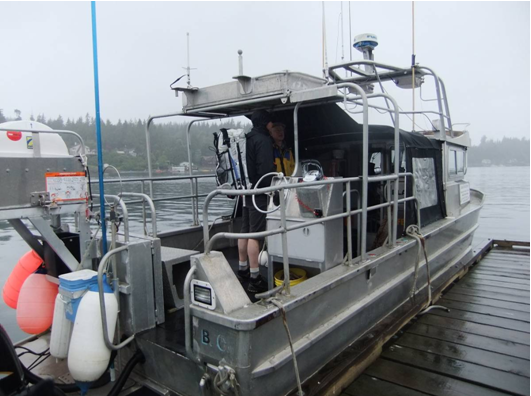
Then he points out the 13 metal grab handles for those who stay outside. That was enough for me. Sitting inside is no way to end the adventure! Outside it is. Brian locks my Porter under the boat’s main storage compartment at the stern.
It rained for 4 hours straight. “Um, hey Brian, any chance I can get to my Porter Pack?”
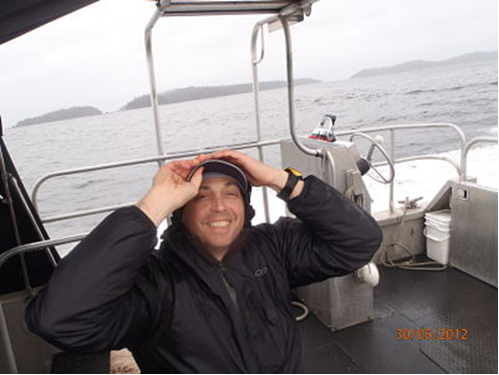
The post Hyperlite Mountain Gear Ambassador: Hiking the West Coast Trail, Trip Report appeared first on Hyperlite Mountain Gear Blog.